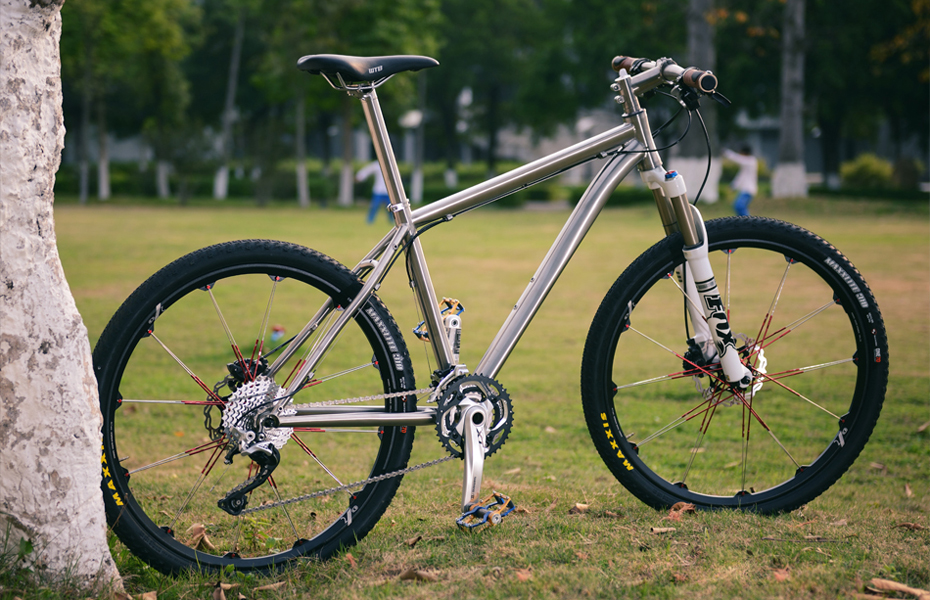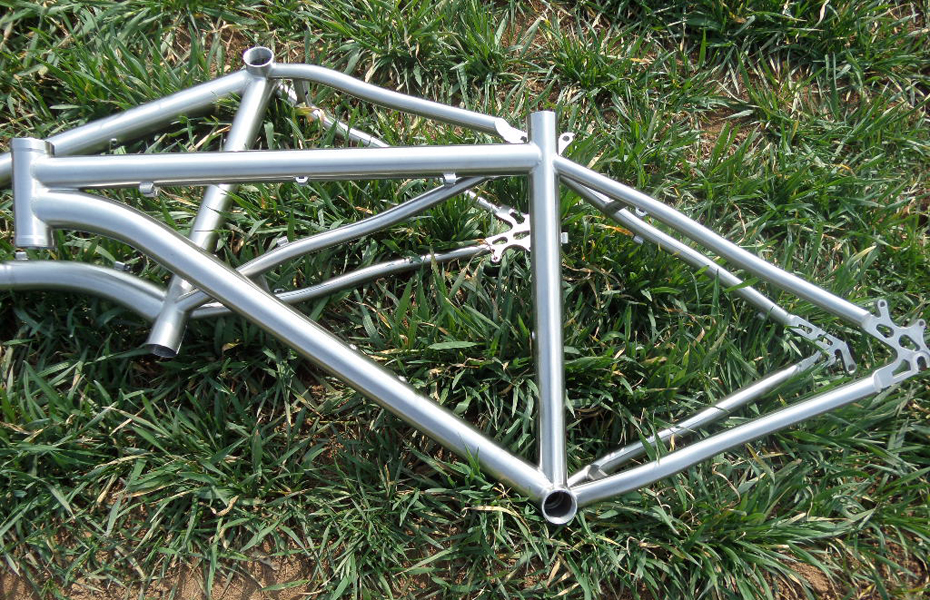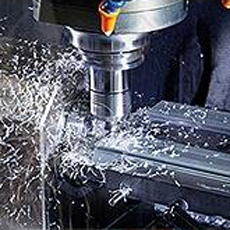Titanium Bicycle

Titanium bicycle is one of the most widespread titanium application in the sports field.
Attempts of creating titanium bicycles were made with the objective of achieving diminished weight in titanium bicycle frames. Titanium, with its unsurpassed strength to weigh ratio, seemed to be the perfect material, as the efficiency of the cycling experience is strongly influenced by the weight of the bike, especially in titanium mountain bikes which are heavily influenced by lightness for achieving best performances. Other titanium properties, such as corrosion resistance and fracture toughness were additional benefits which weight heavily on manufactures decision to use this metal in making bicycles.
All titanium bicycles are known for their spectacular long – life, and all the producers agree that most of them can outlive their initial purchaser. This is due to superior titanium elongation properties. Titanium stretched into tubes will wear twice as less than the same amount of steel and up to five times than the same amount of aluminum, these being titanium primary competitors in bike industry.
The titanium alloy of choice for bicycles is Grade.9-TI3AL2.5V – titanium, 3% aluminum and 2.5% vanadium. It is preferred over the workhorse TI6AL4V because of its superior elongation capabilities which, among other things, allow easy manufacturing of seamless tubes, and also because of its lower price.

Titanium has a reputation for being difficult to work with, though perhaps it is more accurate to say that it is more particular than other metals and requires meticulous procedures, making it time-consuming and labor-intensive. The only weak points of a titanium frame are the joints and welding spots. Welding titanium is a task that can make many a professional reach its limits and this must be your first quality check when evaluating a titanium bike.
As compared to aluminum, steel and carbon fiber a titanium bicycle exhibits some strong and weak points, depending on the particular bike they are used for.
It is true that carbon fiber frames can be manufactured lighter, without suffering the flexibility penalty that titanium bicycle frame show when the girth of the tubes is diminished, but that doesn’t necessarily make for a better choice. In rocky or accidented areas, where a light mountain bike is usually put to hard use, the roads and the rocks really chip the heck of any painted or clear coated frames, so in a very short period of riding a carbon bicycle frame looks like it was inherited form your grandfather.
Titanium positions itself in a very comfortable spot between steel and aluminum as regarding to shock absorbing capabilities and returning the energy of the road impact. It’s true that tires volume and the fork have a say in this, but the main factor is the bicycle frame. Steel is stiffer than titanium and returns almost all of the energy of road impact, but does a poor job at absorbing this shock, making longer rides a bit uneasy. While aluminum is more flexible, making for a more comfortable ride, in the long run, the reusing of the energy that road impact provides can really make a difference.
Experienced bikers agree that titanium well optimizes these sensible parameters, and for all those who are willing to pay the price (pretty high), a titanium bicycle can become a truly partner.

LAST: Rolled Threads vs Cut Threads
NEXT: Titanium Grade











